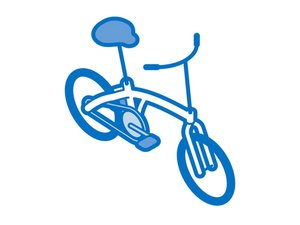Causes
Brake pads can become contaminated by oil or lubricant from various sources, including routine maintenance, wear and tear on washers, or leaks in the braking system. When these pads absorb fluids, their effectiveness is significantly reduced.
To address this:
- Remove the wheel and thoroughly clean the rotor.
- Clean the brake pads using a piece of absorbent paper to dab away oil until no more is lifted.
- Wipe the pads down with isopropyl alcohol or a degreasing agent.
- If the oil has deeply penetrated the pads, more intensive measures are necessary.
- Employ sandpaper to gently remove the outermost layers of the pad that have absorbed the contaminants. This is particularly effective if the pads have been exposed to contaminants for an extended period.
Troubleshooting worn-out bike pads for both rim brakes and disc brakes involves several steps to diagnose and address the issue.
Rim Brakes:
- Check the brake pads for wear indicators. Many pads have lines or other markings that indicate when they are too worn.
- Look for uneven wear. If one pad is more worn than the other, it could indicate misalignment.
Disc Brakes:
- Check the thickness of the pads. Most manufacturers recommend replacing pads when they get to about 1-1.5 mm thickness.
- Inspect the rotor for warping or excessive wear, which can accelerate pad wear.
- Grinding or squealing noises can suggest that pads are too thin or contaminated.
- Ensure the caliper moves freely and is not sticking, which can cause uneven pad wear.
Regular inspection and maintenance of your bike's brake pads are crucial for safe riding. If you notice significant wear or any issues during your troubleshooting, it's time to replace the pads. Always ensure that replacements are compatible with your specific bike model and brake type.
Depending on your brakes there are two types of fluids DOT fluid or Mineral Oil. You will need to purchase a bleed kit based on the fluid type and potentially the manufacturer. To Remove air bubbles you will need to Bleed the brakes. For SRAM hydraulic brakes which use DOT fluid you can follow this video. For Mineral Oil brakes you can follow this guide for Shimano Brakes.
To get a ball park alignment you can loosen the caliper bolts and squeeze your brake lever. Tighten the bolts while holding the brake lever tight. Check your alignment and make fine adjustments after this. Using a light can help to visualize the gap between your rotor and pad.
Cable Friction:
Over time, cables can become dirty or corroded, leading to increased friction. This can make it difficult for the levers to move freely. Regular cleaning and lubrication of the cables can help prevent this issue.
Cable Tension:
Incorrect cable tension can affect lever movement. Ensure that the cables are properly tensioned according to the specifications for your bike's braking system.
Brake Caliper Issues:
If the brake calipers are misaligned or if there's a buildup of dirt and grime, it can impede the movement of the brake arms. Inspect the calipers, clean them, and ensure they are properly aligned.
Hydraulic Brake Issues:
If you have hydraulic disc brakes, problems with the brake fluid, air bubbles in the system, or issues with the master cylinder can cause the levers to feel stuck. Bleeding the brake system can often resolve hydraulic brake issues.
Handlebar and Lever Alignment:
Sometimes, the handlebars or brake levers can become misaligned, causing them to bind against the handlebar. Ensure that everything is properly aligned and adjusted.
Weather Exposure:
Exposure to harsh weather conditions, especially moisture, can lead to rust and corrosion on cables and other metal components. Store your bike in a dry place when not in use, and consider using protective covers.
In extremely cold temperatures, moisture can freeze, affecting the moving parts of the brake system. Keeping your bike in a warmer environment or using anti-freeze solutions can help prevent this.
Worn Bearings:
If the pivot points or bearings in the brake levers are worn out, it can lead to sticking. Inspect these components and replace them if necessary.
- Locate where the play is coming from.
- It could be in the brake levers, headset, seat, bars, stem, wheels brake calipers.
- Tighten the loose components
- Brake Levers, Headset, Seat, Bars, Stem:
- Most of these components can be tightened using an appropriate tool such as a wrench and/or allen keys.
- Brake Cables:
- If there is play in the cables then they will need to be tightened.
- To tighten the cables, you can adjust either at the lever or at the brake caliper component.
- Pull the cable taut and then retighten the securing bolt
- If there is play in the cables then they will need to be tightened.
- Brake Rotors:
- If you have hydraulic brakes and there's play in the lever, you might need to bleed the system to remove air bubbles.
- Brake Levers, Headset, Seat, Bars, Stem:
Appendix
Check the brake pads
The pads may be worn out. If so they will need replacing. See the Brake Pad Adjustment Guide.
Brake arm travel
You should not be able to pull the breaks so far that they hit the handle bar grip. If this happens then you need to adjust the brake cable length. See the Brake Adjustment Guide.

